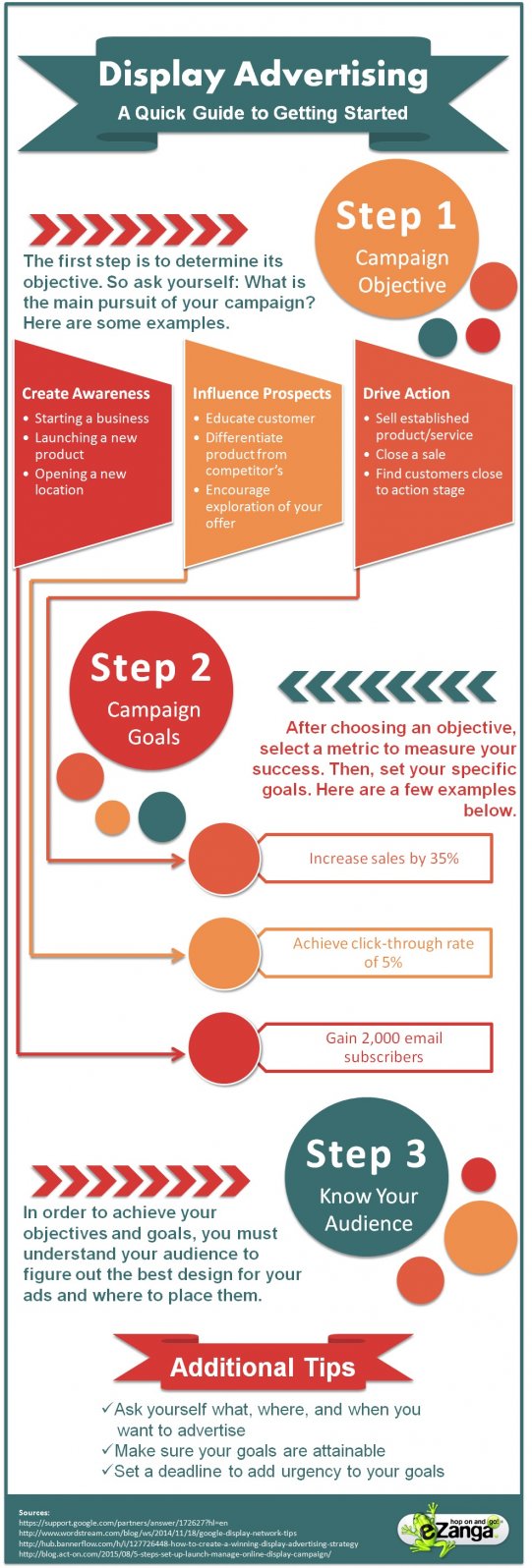
The beginning of any project or task can be a scary endeavor. Now imagine if that endeavor involved investing your money. Then you go from scary to terrifying.
The start of a display ad campaign can feel a lot like that. The returns aren’t always seen immediately, especially when compared to search ads. Display ads serve a different purpose, and even if you can’t fully see it in the numbers, they’re an extremely useful form of advertising.
Mapping out a display campaign can be tricky. Failing to set objectives and goals can be detrimental to your campaign. Without them, you have no plan or structure and are only increasing your chances of failing.
So, in order to make sure your ads have the best chance of succeeding, here are three steps to setting up the framework of a display campaign.
Step 1: Identify Your Campaign Objective
Once you decide on display advertising for your campaign, the first step is to map out your objective.
Objectives are your overall campaign goals. Essentially, they’re summaries of what you want your campaign to achieve.
Setting your objectives is the first step to getting started in your display campaign. Objectives are usually broad since they cover an overall desire.
For example, in your campaign, you might decide you want to drive a certain action, such as increasing sales. Or, you may want to create awareness of a brand, product, or service, or influence prospective customers by educating them to show your company knows what it’s doing.
However, a lot of experts agree that remarketing to customers who have already shown interest in your brand is one of the most effective objectives of display campaign. Unlike search, most customers seeing display ads aren’t actively looking for your product or service. So, the main purpose of display ads is to serve as a visual reminder of something that’s already been of interest, which can help build customer loyalty.
Once you figure out the objective of your campaign, then select a metric and specific goals to measure its success.
Step 2: Set Your Specific Goals
Within the broad objective that you choose for your display campaign, there need to be more specific goals.
But, before any specific goals are set, you must first decide what metric you want to focus on. Essentially, how will you measure what is successful and what isn’t?
You could decide to measure the reach of your ads, the engagement rate, or the conversions and ROI of those ads. However, it’s important to focus on one metric. Trying to focus on too many, or even more than one, can cause you to underperform where it matters most.
To determine your goals, think about the answers to these questions:
- What do you want to advertise?
- Where are you looking to advertise?
- When do you want to advertise?
Most importantly, ask yourself this: What do you want your audience to do after seeing and clicking on your ad?
Say you decide that your objective is to build brand awareness. You might say web traffic is your most valuable metric, with a goal to gain 200 new visitors a day to your website as a result of your campaign.
Whatever your goals may be, they should be clear, concise, and specific. Ideally, they should be quantitative, or measurable by some number or percentage. You might even want to consider attaching a deadline to your goals in order to add a sense of urgency.
Above all else though, your goals should be attainable for your company or business.
Step 3: Figure out Your Audience
Yes, this applies to basically every advertising campaign ever, but it’s important to mention again here.
In order to achieve the goals/objectives you’ve set, you must also understand your audience to know how best to design your ads and where to place them.
After all, knowing your audience is the key to success. How your ads look, where they appear, and when you place them is all dependent on who your audience is and what their habits are.
Check out the infographic below for a visual breakdown of how to get started with setting your display campaign goals.
